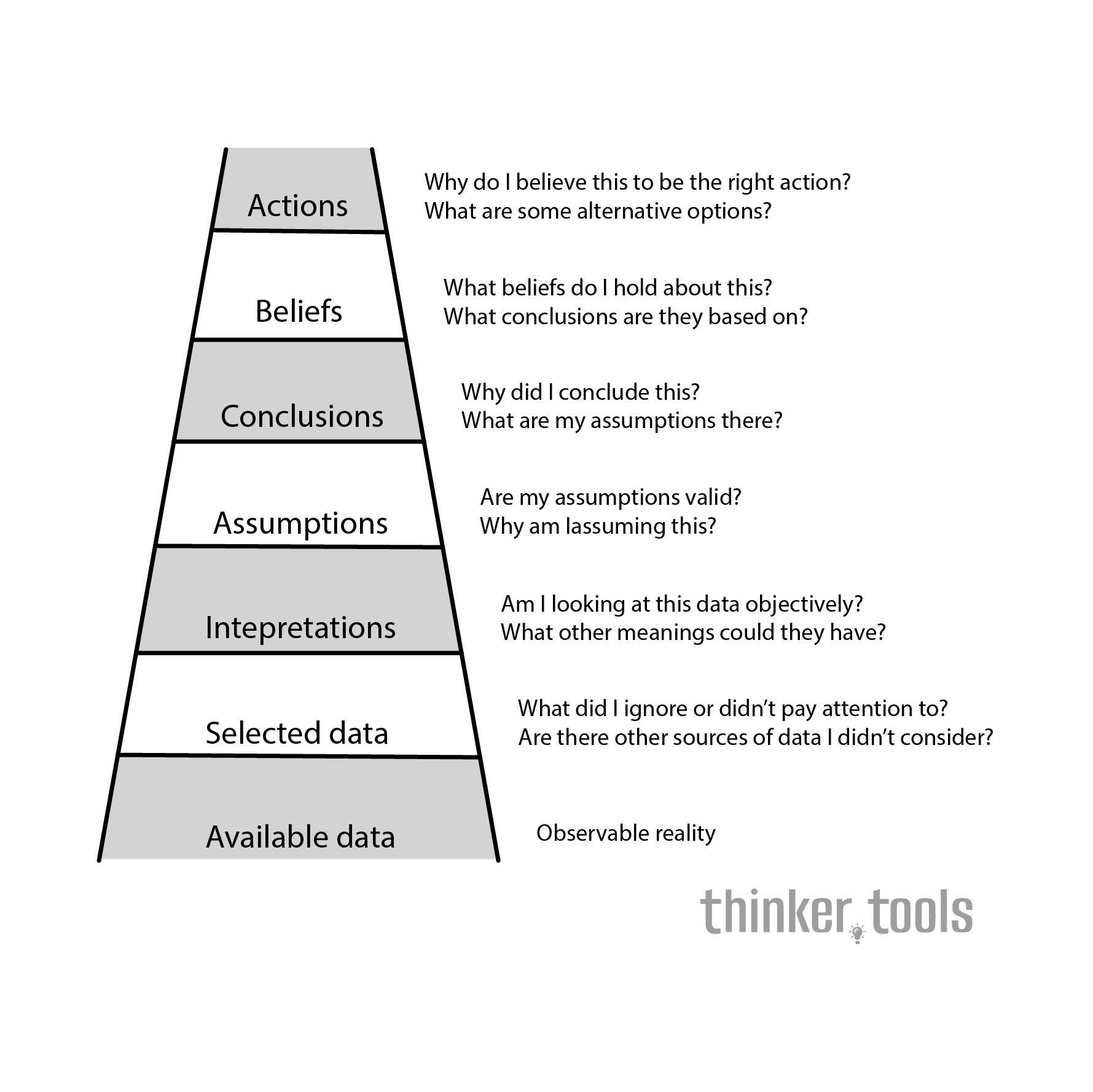
What is the Ladder of Inference?
The Ladder of Inference is a powerful mental model that illustrates how we move from observable data to action through a series of mental steps. Like climbing a ladder, each rung represents a different stage in our thinking process, from raw observation to final decision-making. This framework reveals how our minds process information and, crucially, where our thinking can go astray.
Developed by organizational psychologist Chris Argyris and popularized by Peter Senge in "The Fifth Discipline," the Ladder of Inference has become an essential tool for improving decision-making, communication, and self-awareness in both personal and professional contexts.
The History and Origin
Chris Argyris introduced the Ladder of Inference in the 1970s as part of his work on organizational learning and action science. He observed that people often jumped to conclusions without being aware of the mental steps they took to get there. This unconscious process frequently led to misunderstandings, poor decisions, and interpersonal conflicts.
Peter Senge later incorporated the concept into his systems thinking approach, recognizing it as a fundamental tool for creating learning organizations. The framework gained widespread adoption in business, education, and personal development circles as people recognized its universal applicability.
How to Use the Ladder of Inference
The Ladder consists of seven rungs, each representing a stage in our thinking process:
1. Observable Data and Experiences At the bottom rung, we encounter raw, observable facts - what a video camera would record. This is the pool of directly observable data available to everyone.
2. Selected Data We can't process everything, so we select certain details to focus on. Our attention acts as a filter, choosing what seems relevant or important.
3. Interpreted Data We add meaning to what we've selected, interpreting it based on our personal and cultural contexts. The same data can mean different things to different people.
4. Assumptions Based on our interpretations, we make assumptions about what's happening. These assumptions fill in gaps in our knowledge.
5. Conclusions We draw conclusions from our assumptions, creating a coherent story about what's happening and why.
6. Beliefs Our conclusions, especially when reinforced over time, solidify into beliefs about how the world works.
7. Actions Finally, we take actions based on our beliefs, which then create new observable data, continuing the cycle.
Practical Examples
Example 1: Workplace Scenario Observable data: Your colleague doesn't greet you in the morning. Selected data: You focus on the lack of greeting. Interpretation: "They ignored me." Assumption: "They must be upset with me." Conclusion: "They don't value our working relationship." Belief: "This colleague is unfriendly." Action: You avoid collaborating with them.
Alternative Path: By pausing at the interpretation stage, you might consider other possibilities: they could be preoccupied, didn't see you, or are dealing with personal issues. This awareness opens up different conclusions and more constructive actions.
Example 2: Personal Relationship Observable data: Your partner arrives home late three times this week. Selected data: The pattern of lateness. Interpretation: "They're avoiding spending time at home." Assumption: "They're unhappy in our relationship." Conclusion: "Our relationship is in trouble." Belief: "My partner doesn't prioritize our relationship." Action: You become distant or confrontational.
Using the Framework: Instead of climbing the ladder unconsciously, you could:
- Question your selection of data
- Test your interpretations
- Challenge your assumptions
- Seek additional information before concluding
Benefits and Life Improvements
1. Enhanced Self-Awareness Understanding your thinking process helps you recognize when you're making leaps in logic. This awareness is the first step toward more thoughtful decision-making.
2. Improved Communication By understanding that others have their own ladders, you can better appreciate different perspectives and communicate more effectively. You learn to share your reasoning and inquire about others'.
3. Reduced Conflicts Many conflicts arise from different interpretations of the same events. The Ladder of Inference helps identify these differences and find common ground.
4. Better Decision-Making By slowing down your thinking process and examining each rung, you make more informed, rational decisions rather than reactive ones based on untested assumptions.
5. Increased Learning Questioning your beliefs and testing your assumptions creates opportunities for learning and growth. You become more open to new information and perspectives.
6. Stronger Relationships Using this framework in personal relationships helps you avoid misunderstandings and build trust through clearer communication and mutual understanding.
Conclusion
The Ladder of Inference is more than just a thinking tool - it's a pathway to greater wisdom and effectiveness in all areas of life. By understanding how we move from observation to action, we can intervene in our own thinking processes, make better decisions, and build stronger relationships. Whether you're navigating workplace challenges, improving personal relationships, or simply trying to understand the world better, the Ladder of Inference provides a clear framework for clearer thinking.